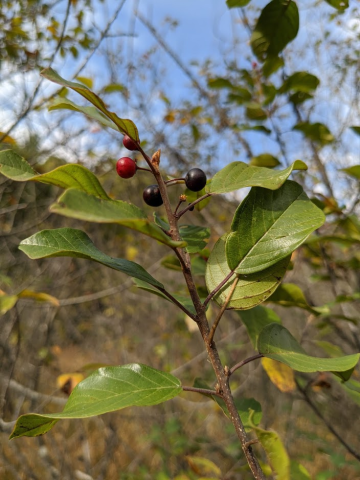It's Time For Buckthorn Busting
Fall is a great time to manage buckthorn on your property. Common and glossy buckthorn are invasive woody shrubs which aggressively outcompete native plants, disrupting the habitat benefits they provide. Buckthorn chemically alters the soil, creating an inhospitable environment for other plants.
Buckthorn leaves stay green longer than most other Minnesota woodland trees and shrubs so you'll easily notice them in mid to late October.
Common buckthorn (Rhamnus cathartica) can be found in upland forests. Look for the thorn, which can be found at the end of some branches. Glossy buckthorn (Frangula alnus) tends to grow in slightly wetter areas but can be found in a variety of habitats. There are no thorns. Look for the rust colored terminal bud.
New research from the University of MN suggests that buckthorn seeds do not persist in the soil for 6+ years as was previously thought. Their findings suggest that over 97% of seeds germinate in the first year. As you manage buckthorn, aim to prevent seed production on mature plants with mid-summer cutting and follow up with treatment of the small sprouts for the best results.
See ACD's buckthorn fact sheet for tips on identifying buckthorn, to learn about native look-alikes, and compare methods for controlling common and glossy buckthorn. For more information contact Logan Olson, Restoration Technician, at

